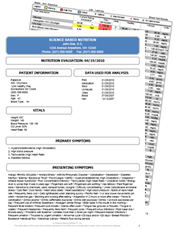The classical approach in studying environmental chemicals was to only examine high doses of those environmental chemicals. The goal was to determine the doses that resulted in death, malformations and low birth weight.
Today…thankfully the focus is starting to turn to studying the effects of endocrine disrupting chemicals on biological changes via epigenetic mechanisms. These changes disrupt hormonal signals that regulate cellular differentiation, leading to increased susceptibility to diseases later in life.
These effects are being observed at the very low levels of these chemicals to which humans are commonly exposed, although these exposures were previously assumed to be “safe” because they did not cause death or gross malformations.
Heindel, et.al, Animal models for probing the developmental basis of disease and dysfunction paradigm, Basic Clin. Pharmacol. Toxicol. 102 (2) (2008), pp. 76–81
Epigenetic Mechanisms
One should become familiar with the term “epigenetic mechanisms” because it’s the latest “buzz word” in the healthcare community. “Epigenetics” refers to how our genes express themselves. Currently, there is a lot of research going into environmental mechanisms that cause genes to express or go dormant. Environmental associations are being mapped out to such chronic disease as Type I and Type II Diabetes, obesity, allergies, auto-immune disorders, cancers, PMS, poly-cystic ovary disease…the list goes on and on. We know what high dose exposure to these chemicals can do…death…birth defects…but we’ve only just begun to study what long term, low dose exposure can do. The decades long outcry is finally being heard.
Heindel, et.al., state, “We propose that the recent epidemics of chronic diseases now being observed in children: such as type 2 diabetes, childhood asthma, ADHD, and obesity must have an environmental, dietary and behavioral component, since classical genetic mutations cannot account for such large increases in these disease over such a short time period. Instead, it is becoming clear that all complex diseases are the result of gene–environment interactions and that epigenetic modification of gene function during critical periods in development plays a critical role in the etiology of disease. This is referred to as “the fetal basis of adult disease” hypothesis.”
– Heindel, et.al, Animal models for probing the developmental basis of disease and dysfunction paradigm, Basic Clin. Pharmacol. Toxicol. 102 (2) (2008), pp. 76–81.
Brominated flame retardants (BFRs)
Brominated flame retardants (BFRs) and brominated dioxins are emerging persistent organic pollutants that are ubiquitous in the environment and can be accumulated by wildlife and humans. These are the chemicals used in flame resistant clothing like children’s pajamas and are able to modulate steroidogenic gene expression. This can lead to endocrine disruption which can cause many of the chronic diseases previously described.
UV Filters
UV filters are endocrine disrupting compounds with BP-3 being the more potent. UV filters in sunscreen are often present in high concentrations, which potentially may lead to high systemic exposure dosages. Sunscreen UV filters have been found in human blood and urine after repeated whole-body topical application. The three chemical ultraviolet absorbers benzophenone-3 (BP-3), octyl-methoxycinnamate (OMC) and 4-methylbenzylidene camphor (4-MBC) are commercially used in sunscreens worldwide. Apart from sun protection, they may possess endocrine-disrupting effects. In one study, 32 healthy volunteers, 15 young males and 17 postmenopausal females, were exposed to daily whole-body topical application of 2 mg/cm(2) of sunscreen formulation at 10% (w/w) of each for 4 days. Almost all three sunscreens were undetectable in plasma and urine before the first application. One to 2 hours after the first application, all three sunscreens were detectable in the blood.
– J Eur Acad Dermatol Venereol. 2008 Apr;22(4):456-61. Epub 2008 Jan 23.
In today’s environment, being healthy is more than diet and exercise. You have to be aware not only of the pesticides used on the produce and hormones or antibiotics in your meats, but now you’re dealing with toxic chemical cleaners used in your homes, synthetic carpeting off gassing, chemicals used on our clothing and skin care products. With drinking water, we don’t necessarily have to be concerned about microbes as much as we do the plastics, pharmaceutical drugs, and arsenic that are contaminating it. It can drive you crazy if you don’t know where to start and are just playing guesswork with your health. Being healthy in today’s environment takes more than a multiple vitamin. But how do you know what to take?
Do you think this might be the missing link to solving your health problems? In our office, there are tests we can do to help guide us to that answer. We can see what metals you’re being exposed to, how well you are excreting them and what toll they may be taking on your body. Don’t wait any longer. Get started today by setting up a nutritional consultation to get you on the road to better health.

